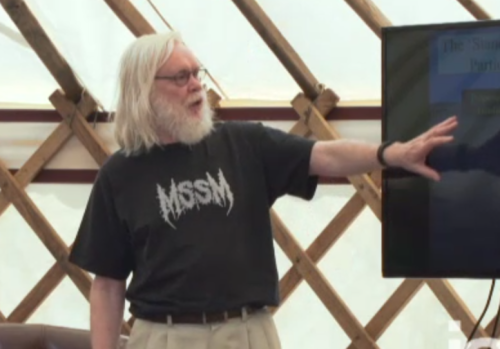
Looking ahead: John Ellis on the future of particle physics. (Courtesy: IAI TV)
By Hamish Johnston
In 2012 particle physicists gave themselves a giant pat on the back when the Higgs boson was discovered at the Large Hadron Collider at CERN – nearly 50 years after it was first predicted to exist. But what have particle physicists done since, and what does the future hold for the field? In a video called “After the Higgs boson: what’s next for 21st century physics?” from the Institute of Art and Ideas, the theoretical physicist John Ellis charts the future course of particle physics. Pay attention for a joke about the UK’s foreign secretary Boris Johnson.
The Big Bang was surely a sight to behold, but have you ever wondered what it would have sounded like? The cosmologist Peter Coles has the answer on his blog, and as you might imagine it was loud enough to wake up the neighbours. But it’s certainly not as loud as I expected – for a figure in decibels, check out Coles’ blog.
Like physics, chemistry is everywhere – even in that stack of shirts that have been piling up on your ironing board. If you want to know what hydrogen bonds have to do with a crisp pleat, then the chemist Mark Lorch has the answer and much more in “How chemistry can make your ironing easier”.
Guidelines
Show/hide formatting guidelines
this text was deletedwhere people live in harmony with nature and animals</q>
Some text